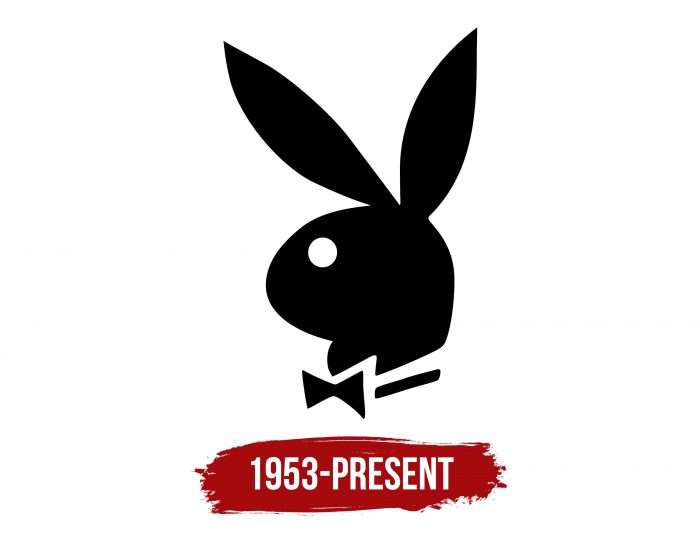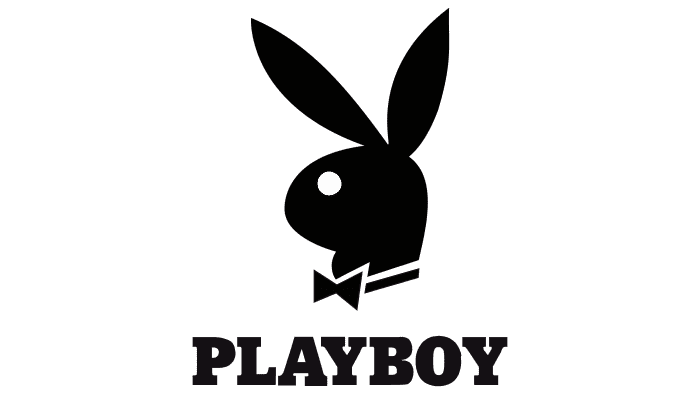The globally recognized logo of the men’s magazine Playboy reflects its theme – a symbol that has ensured brand recognition for many years. The symbol has become a reflection of playfulness and, at the same time, elegance, making the emblem easily memorable.
Playboy: Brand overview
Playboy is a men’s magazine that became the foundation for Playboy Enterprises publishing. It has been published monthly since 1953. Its pages feature adult content, articles about show business, products, sports, fashion, classic stories, and anecdotes.
Meaning and History
The Playboy logo features a rabbit’s head. Graphic designer Art Paul created this famous drawing. He was asked to do this by the magazine’s founder and editor-in-chief, Hugh Hefner, who wanted Playboy to have a memorable mascot like The New Yorker and Esquire.
The Playboy Bunny logo is an important part of the cover. It appears in every issue in various variations: sometimes, the rabbit covers its eye, and sometimes, it hides, prompting readers to look for it. Artists often play with the visual context.
What is Playboy?
Playboy is an American glossy men’s magazine founded in 1953 by Chicago resident Hugh Hefner. The publication covers a wide range of topics, from lifestyle to entertainment. Today, it exists in two formats: as a print magazine and as a website.
Playboy: Interesting Facts
Playboy is a famous magazine started by Hugh Hefner in 1953. It’s known for many things, not just pictures of women.
- First Ever Issue: The first Playboy magazine appeared in December 1953 with Marilyn Monroe on the cover. It sold over 50,000 copies and made the magazine super popular.
- The Playboy Bunny: When you think of Playboy, you might think of the bunny logo. It’s a rabbit with a bow tie, and it’s all about looking cool and classy.
- Clubs with Bunnies: In 1960, the first Playboy Club opened in Chicago. These clubs, which had waitresses dressed as bunnies, were a big hit in the ’60s and ’70s.
- Famous Interviews: Playboy didn’t just have pictures; it had good interviews with famous people like Martin Luther King Jr., Malcolm X, and John Lennon, giving readers deep conversations to think about.
- Stories and Articles: The magazine also featured stories and articles by famous writers like Arthur C. Clarke and Margaret Atwood, making it a place for serious literature.
- The Playboy Mansion: Hugh Hefner’s house in Los Angeles was known for wild parties and famous guests, representing what Playboy was all about.
- Standing Up for Causes: Playboy supported big ideas like civil rights and free speech but was criticized for not treating women right.
- Changing with Times: In 2016, Playboy tried to change its image by stopping nude pictures, but that didn’t last long, and they were back by 2017.
- Going Digital: In 2020, Playboy stopped making printed magazines and moved everything online as the internet became more popular.
- Helping Out: The Playboy Foundation helped groups working on human rights and freedom, showing that Playboy cared about important issues.
Playboy has long been a big deal in American culture, mixing entertainment with serious discussions on rights and freedom. Its story is full of ups and downs, showing how it tried to be more than just a magazine.
Font and Colors
It is believed that Art Paul conceived the rabbit image in just ten minutes. The drawing is very simple:
- An oval head with a round eye.
- Ears in the shape of pointed ovals.
- A bow tie consisting of two triangles and an oblique line.
There was also a female version, which appeared in 1956. It was used on souvenir products: T-shirts, bracelets, cufflinks.
The logo has a romantic subtext: the image of a rabbit evokes subconscious notions of playfulness. The bow tie, in turn, is associated with the elegance of nightclubs. At the same time, the emblem is perceived ambiguously, as the picture looks like part of animation, and rabbits are considered harmless domestic animals.
There are no inscriptions on the Playboy brand emblem. The designer focused on the mascot, choosing black as the primary color. The name of the magazine is depicted on the cover in a standard bold font with serifs.
Playboy color codes
| Black | Hex color: | #000000 |
|---|---|---|
| RGB: | 0 0 0 | |
| CMYK: | 0 0 0 100 | |
| Pantone: | PMS Process Black C |





